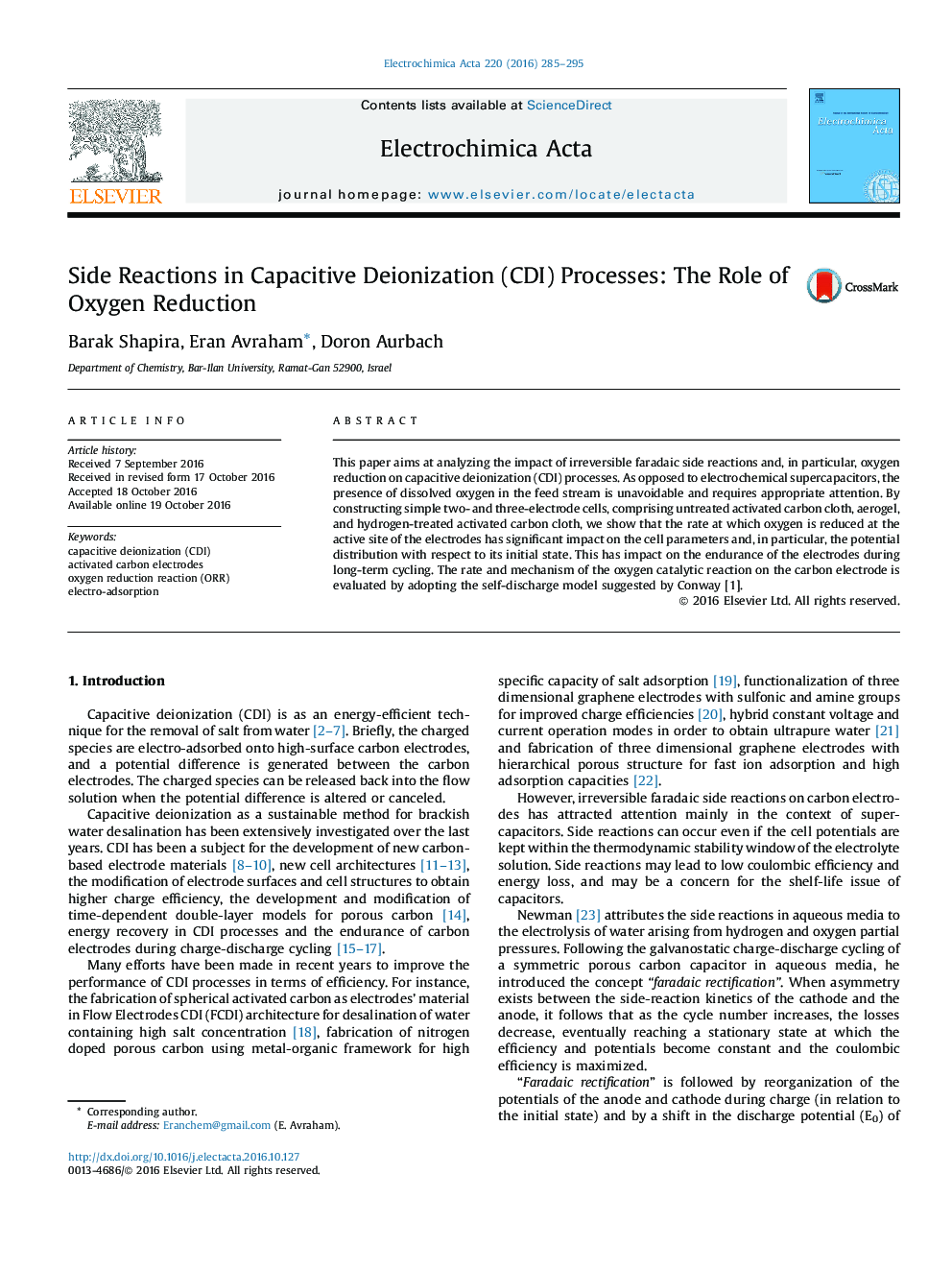| Article ID | Journal | Published Year | Pages | File Type |
|---|---|---|---|---|
| 6472334 | Electrochimica Acta | 2016 | 11 Pages |
This paper aims at analyzing the impact of irreversible faradaic side reactions and, in particular, oxygen reduction on capacitive deionization (CDI) processes. As opposed to electrochemical supercapacitors, the presence of dissolved oxygen in the feed stream is unavoidable and requires appropriate attention. By constructing simple two- and three-electrode cells, comprising untreated activated carbon cloth, aerogel, and hydrogen-treated activated carbon cloth, we show that the rate at which oxygen is reduced at the active site of the electrodes has significant impact on the cell parameters and, in particular, the potential distribution with respect to its initial state. This has impact on the endurance of the electrodes during long-term cycling. The rate and mechanism of the oxygen catalytic reaction on the carbon electrode is evaluated by adopting the self-discharge model suggested by Conway [1].
